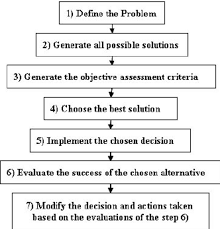Agile Decision Making: How to Make Quick and Effective Choices
Agile decision making is a strategic approach that emphasizes flexibility, adaptability, and quick response to changing circumstances. In today’s fast-paced world, the ability to make decisions swiftly and effectively is crucial for success.
One of the key principles of agile decision making is the concept of iterative decision-making processes. Instead of waiting for all the information to be available before making a decision, agile approaches involve making decisions based on the best available information at the time and being open to adjusting course as new information becomes available.
Another important aspect of agile decision making is collaboration. By involving relevant stakeholders in the decision-making process, teams can leverage diverse perspectives and expertise to arrive at better decisions more quickly.
Furthermore, agile decision making encourages experimentation and learning from failures. By taking calculated risks and being willing to adjust strategies based on outcomes, organizations can continuously improve their decision-making processes.
In conclusion, agile decision making is a powerful approach that enables individuals and organizations to make quick, effective choices in today’s dynamic environment. By embracing flexibility, collaboration, experimentation, and continuous learning, you can enhance your ability to navigate complex challenges and seize opportunities with confidence.
9 Essential Tips for Agile Decision Making in Teams
- Encourage open communication and collaboration among team members.
- Prioritize quick feedback loops to make decisions efficiently.
- Focus on delivering value to the customer through iterative processes.
- Embrace change and adaptability in decision-making processes.
- Empower team members to make decisions at their level of expertise.
- Use data and metrics to inform decision-making whenever possible.
- Regularly review and reflect on decisions to learn and improve continuously.
- Avoid over-analyzing or delaying decisions, strive for timely action.
- Promote a culture of trust, transparency, and accountability in decision making.
Encourage open communication and collaboration among team members.
Encouraging open communication and collaboration among team members is a fundamental tip in agile decision making. By fostering an environment where team members feel comfortable sharing their ideas, concerns, and perspectives, organizations can leverage the collective intelligence of the team to make better decisions. Open communication promotes transparency, trust, and mutual understanding, leading to more efficient and effective decision-making processes. Collaboration allows for diverse viewpoints to be considered, leading to innovative solutions and a stronger sense of ownership among team members. Embracing open communication and collaboration not only enhances decision-making outcomes but also strengthens team dynamics and fosters a culture of continuous improvement.
Prioritize quick feedback loops to make decisions efficiently.
Prioritizing quick feedback loops is a fundamental tip in agile decision making that can significantly enhance the efficiency of the decision-making process. By establishing mechanisms for receiving timely feedback on decisions made, individuals and teams can quickly assess the impact of their choices and make necessary adjustments promptly. This iterative approach not only accelerates the decision-making process but also ensures that decisions are informed by real-time data and insights, leading to more effective outcomes in a dynamic and fast-paced environment.
Focus on delivering value to the customer through iterative processes.
In agile decision making, it is essential to focus on delivering value to the customer through iterative processes. By prioritizing the customer’s needs and preferences, teams can continuously refine their products or services based on feedback and evolving requirements. This iterative approach not only ensures that the end result aligns with customer expectations but also allows for quick adjustments and improvements along the way. Ultimately, by emphasizing value delivery through iterative processes, organizations can enhance customer satisfaction, drive innovation, and achieve long-term success in today’s competitive market landscape.
Embrace change and adaptability in decision-making processes.
Embracing change and adaptability in decision-making processes is a key principle of agile decision making. By being open to new information, shifting circumstances, and alternative perspectives, individuals and organizations can make more informed and effective decisions. This flexibility allows for quick adjustments when needed, leading to better outcomes and increased success in navigating complex challenges. In today’s rapidly changing world, the ability to adapt and embrace change is essential for making agile decisions that drive progress and innovation.
Empower team members to make decisions at their level of expertise.
In agile decision making, empowering team members to make decisions at their level of expertise is essential for fostering a culture of autonomy and accountability. By entrusting individuals with the authority to make decisions within their domain of knowledge and skills, organizations can leverage the diverse expertise of their team members to drive innovation and efficiency. This approach not only streamlines the decision-making process but also promotes a sense of ownership and responsibility among team members, leading to more effective and timely outcomes.
Use data and metrics to inform decision-making whenever possible.
Using data and metrics to inform decision-making whenever possible is a crucial aspect of agile decision making. By relying on concrete information rather than intuition or assumptions, individuals and teams can make more informed and objective decisions. Data-driven decision-making helps to reduce biases and uncertainties, leading to more effective and successful outcomes. By leveraging data and metrics, organizations can identify trends, patterns, and opportunities that may not be immediately apparent, enabling them to make strategic decisions with confidence and clarity.
Regularly review and reflect on decisions to learn and improve continuously.
Regularly reviewing and reflecting on decisions is a crucial aspect of agile decision making. By taking the time to analyze the outcomes of past decisions, individuals and teams can gain valuable insights into what worked well and what could be improved upon. This process of continuous learning and improvement not only helps to refine decision-making skills but also allows for the adaptation of strategies based on real-world feedback. Embracing this practice fosters a culture of growth and innovation, enabling individuals and organizations to make more informed and effective decisions in the future.
Avoid over-analyzing or delaying decisions, strive for timely action.
In agile decision making, it is crucial to avoid over-analyzing or delaying decisions and instead strive for timely action. By focusing on making decisions promptly based on the best available information, individuals and teams can adapt quickly to changing circumstances and seize opportunities as they arise. This proactive approach not only helps in maintaining momentum but also fosters a culture of responsiveness and agility, enabling better outcomes in dynamic environments.
Promote a culture of trust, transparency, and accountability in decision making.
Promoting a culture of trust, transparency, and accountability in decision making is essential for implementing agile practices effectively. When team members trust each other and feel comfortable sharing their perspectives openly, it fosters a collaborative environment where decisions can be made efficiently. Transparency ensures that everyone is on the same page regarding the decision-making process and rationale behind choices. Accountability holds individuals responsible for their contributions to the decision-making process, leading to more thoughtful and well-informed decisions. By prioritizing trust, transparency, and accountability, teams can enhance their agility and make better decisions that align with their goals and values.




